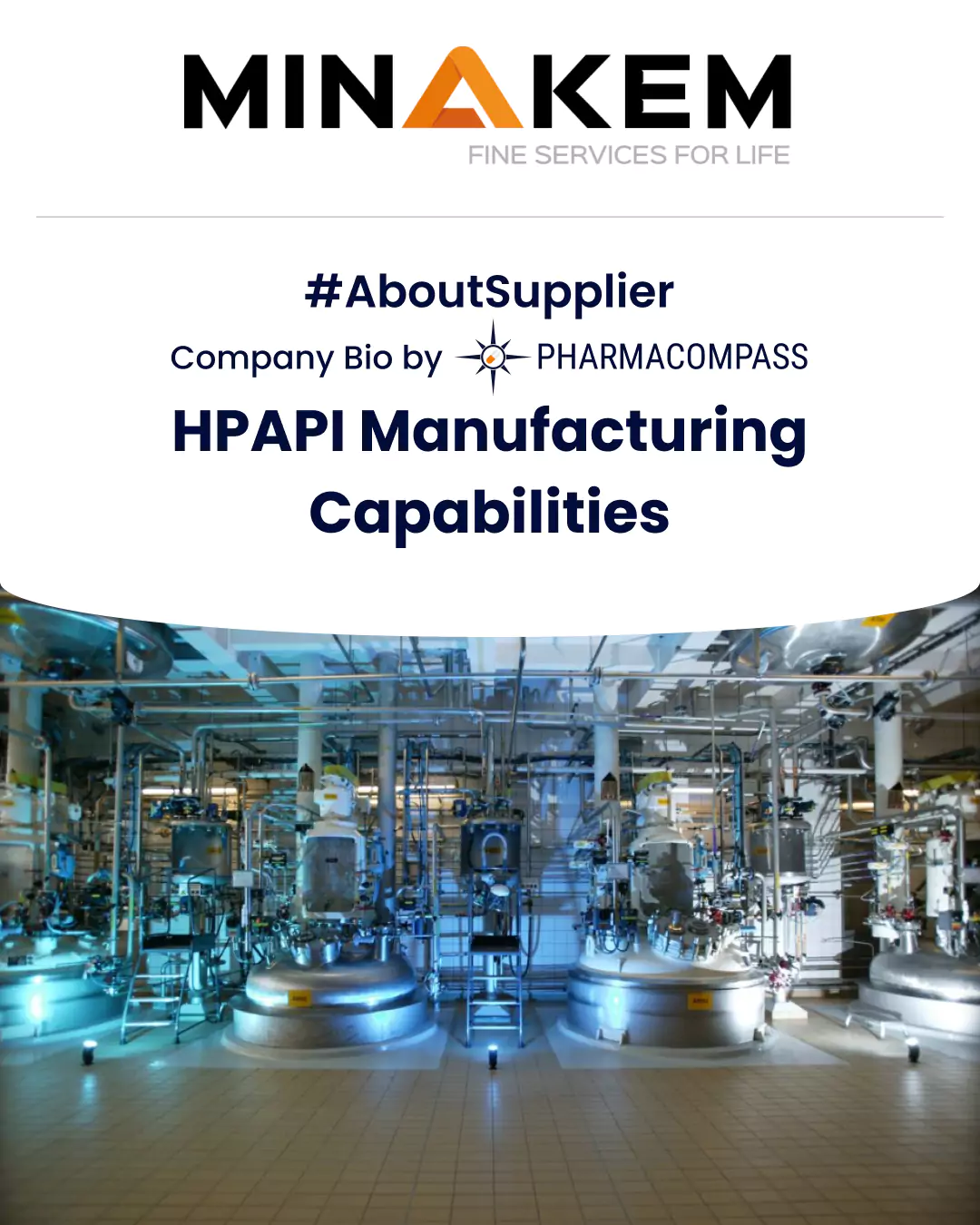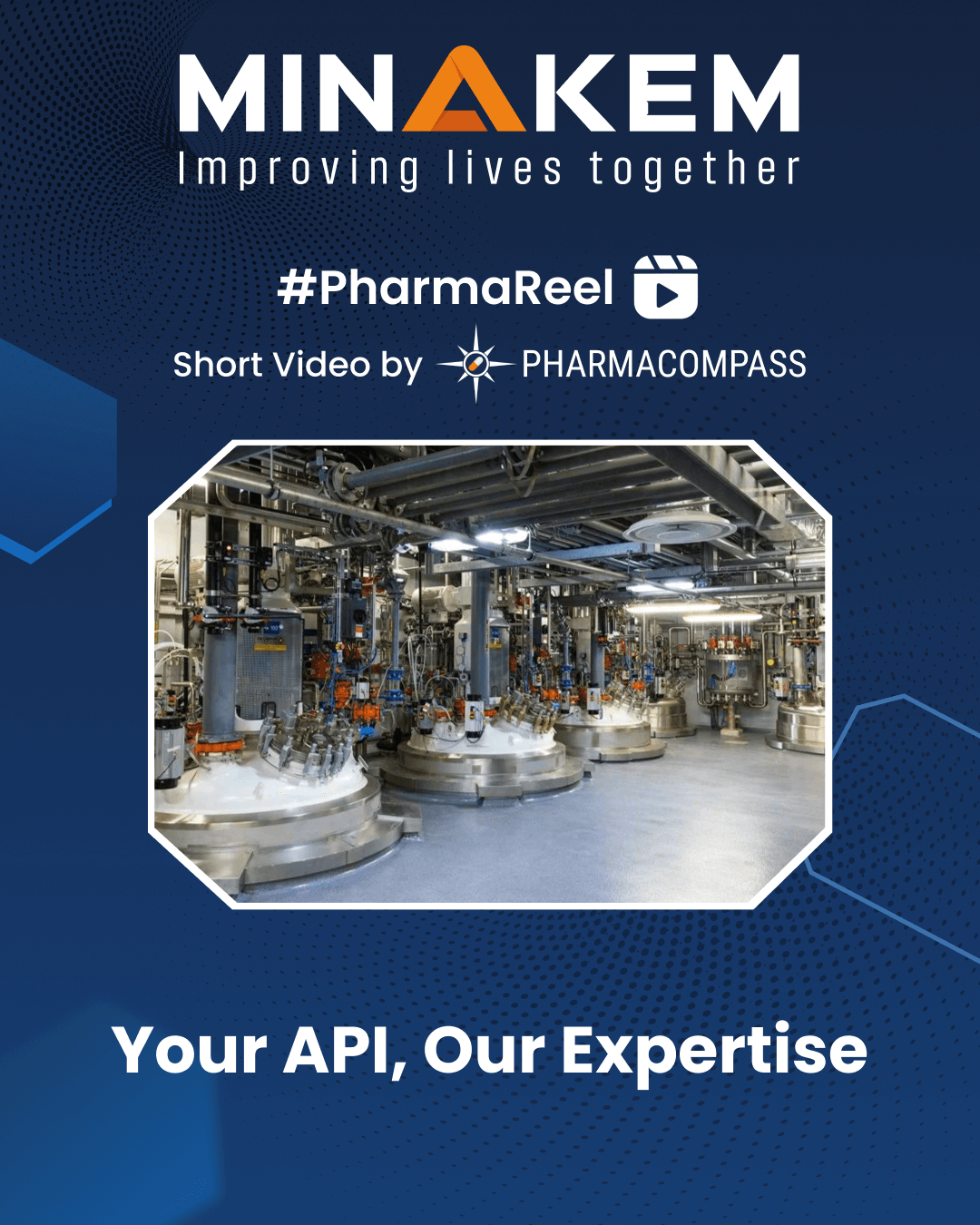
By PharmaCompass
2021-10-11
Impressions: 1819
Looking for highly potent drug substances or HPAPIs? Find a CDMO, CMO offering high potent complex APIs, intermediates & cytotoxics on PharmaCompass.
Q1. What are High Potency APIs (HPAPIs)? How do HPAPIs differ from APIs?
High Potency APIs (HPAPIs) are defined as Active Pharmaceutical Ingredients (APIs) that require special handling due to toxicity and use extremely small doses in finished drugs.
High Potent Active Pharmaceutical Ingredients (HPAPI) are effective at much smaller dosage levels than traditional APIs, but their potent characteristics present specific highly potent API handling challenges.
Although there is no standard classification for the potency of pharmaceuticals, all potent molecules can be defined as powerfully active, noxious materials needing only very small quantities of dosing to have an effect.
HPAPI compounds or highly potent compounds are also known for their ability to target diseased cells more precisely and selectively than other APIs.
Highly Potent Active Pharmaceutical Ingredients (HPAPIs) or High Potency Active Pharmaceutical Ingredients (HPAPIs) are extremely effective pharmacologically active ingredients.
A growing number of pharmaceutical products contain Highly Potent Active Pharmaceutical Ingredients (HPAPIs), which has led to an explosive growth in demand for the production of HPAPIs using state of the art development methods of Highly Active Pharmaceutical Ingredients (HAPIs) whilst adhering to current Good Manufacturing Practice (cGMP) guidelines.
These highly potent API or high-potency APIs (HPAPIs) are frequently characterized by complex API structures requiring multi-step processes or semi-synthesis, often involving more than 10 steps.
For drug-substance manufacturing, the highly potent API (HPAPI) may be a small-molecule, biologic compound or antibody drug conjugate (ADC), which contains a cytotoxic compound, a small-molecule bound to a monoclonal antibody.
High-Potency APIs (HPAPIs) are most commonly used in hormonal drugs for breast cancer, followed by glaucoma medication. Highly potent API services (High potent CDMO services) are also used in formulating cardiovascular drugs, central nervous system drugs and musculoskeletal drugs.
Therefore, the high-potency API (HPAPI) market covers a wide range of product types across several therapeutic areas, although oncology-focused medicines continue to lead in terms of innovative pipeline candidates and upcoming generic entries.
Q2. What are the special facilities required for the handling and development of HPAPIs?
The cytotoxicity of High Potency Active Pharmaceutical Ingredients (HPAPIs) or Highly Active Pharmaceutical Ingredients (HAPIs) presents highly potent API handling challenges and requires heavy investment in specialized containment equipment to ensure that employees and their environment are protected from exposure.
HPAPIs are complex APIs which require specialized facility design, equipment, operation and process safety throughout their drug development process and commercial scale production, in order to overcome HAPI containment challenges and ensure operator safety.
Large-scale highly potent API (HPAPI) manufacturing, is therefore increasingly being outsourced to specialized contract development and manufacturing organizations (CDMOs) offering contract development and manufacturing of highly potent APIs with exceptional infrastructure, expertise and track records in place.
Drug manufacturers are developing high potent drugs, and despite the lack of specific environmental and safety regulations, HPAPIs have become fertile ground for contract manufacturing and for contract development and manufacturing organizations (CDMOs & CMOs for HPAPI manufacturing), which have been actively building up capacity over the past few years.
The following critical parameters covering HPAPI development or hi-potency (hi-potent) drug substance development should be considered when choosing a CDMO - contract development and manufacturing organization - partner offering contract development and manufacturing of highly potent APIs to manage shortened development timelines for HPAPI products:
- Contract manufacturing Scale
- Quality Regime
- Pharmaceutical manufacturing (HAPI - High Potent Active Ingredient Manufacturing)
- Containment
- Formulation & Enabling HPAPI Technology
- Devices
- Drug Product Supply
Once an appropriate CDMO is selected for HPAPI development & manufacturing services, the main features and special facilities required for the handling and development of High Potent APIs (High Potent Active Pharmaceutical Ingredients - HPAPIs) are noted below:
1. Room pressure differentials designed to overcome HAPI containment challenges (with monitoring and verification), with the main HPAPI-handling or highly potent API handling area at negative pressure to surrounding rooms.
2. Airlocks and vestibules around pharmaceutical manufacturing (contract development and manufacturing of highly potent APIs) facility and laboratory spaces to provide gowning and de-gowning areas and proper pressure differentials.
3. Restricted access to ensure that only the necessary trained employees enter the HPAPI-handling areas.
4. Misting showers as part of exit vestibules to rinse personal protective equipment (PPE) and gowning prior to removal.
5. Filtration and capture of contaminants, with safe-change filters, both point source (within the isolator, ventilated enclosure) and the general HVAC exhaust system.
Many contract manufacturers are building new facilities that are designed specifically for the manufacture of HPAPIs, which require an investment of millions of dollars beyond typical GMP (good manufacturing practices) production facilities.
This investment may include specialized facilities for HPAPI–antibody conjugations that incorporate both handling of high potent APIs and biologics processing capabilities. As in other areas of pharmaceutical manufacturing, in HAPI (High Potent Active Ingredient) manufacturing, disposable or flexible containment technologies are becoming important in HPAPI manufacturing.
Automated systems are already in operation across many facilities but this is likely to increase as processes become more integrated. As the demand increases for high potency drugs and development of highly active pharmaceutical ingredients (HAPIs) in biotechnology occur, there is the potential for closed systems to be developed to further protect operator and environment safety, however this will coincide with a reduction in production volumes.
In summary, the product development of highly potent drug substances and drug products bring a number of challenges, but they are not insurmountable. Technologies to ensure safe handling procedures have now become widely available (e.g. isolators, split butterfly valves).
Q3. What are the processes involved in HPAPI manufacturing from process development to cGMP production?
High Potency Active Pharmaceutical Ingredients (HPAPIs) are complex APIs which are highly specific in their action and offer significant efficiency even at low daily therapeutic doses. HPAPIs have the ability to target precise disease cells and are, hence, used in formulating highly potent drugs.
The small, medium or large-scale highly potent API (HPAPI) manufacturing at desired levels of quality, requires highly specialized process development capabilities, as well as a broad mix of associated advanced technologies.
High potency manufacturing of highly potent compounds can have significant benefits, but they also present multiple challenges to companies offering contract manufacturing services for high potency APIs (HPAPIs) or high potency API (HPAPI) services, especially during commercial operations.
The development and transfer of HPAPI manufacturing processes to full production scale presents particular challenges to a CDMO facility or CMO for HPAPI manufacturing. It is especially important to conduct a full risk analysis including setting of Occupational Exposure Limits (OELs) for each high potency chemical step.
The procedures currently involved in HPAPI manufacturing encompassing process development & current Good Manufacturing Practice (cGMP) production include:
- R&D laboratories (Batch size: From mg to g scale)
1. Analytical & Process transfer / familiarization
2. Process & analytical development of highly active pharmaceutical ingredients (HAPIs)
3. Process characterization
4. DoE (more information – faster – using less product)
- Kilolabs (Batch size: From 20g to 500g)
5. cGMP production for clinical trials
6. Process validation
7. Clinical supply
Large-scale highly potent API (HPAPI) manufacturing (Batch size: From 500g to 10kg)
8. cGMP production at commercial scale
9. Commercial supply
10. Quality control
- Method development / transfer / validation
- IPC
- Release testing
- Stability studies
Technological advances will further drive changes in the HPAPI manufacturing process. Given the risks involved with operator exposure to high potency drug products, however, there are certain technologies that we can expect to eliminate the potential risks, which will be incorporated into the manufacturing process — namely the use of robotics that will remove the operator from physically working with harmful substances.
Q4. How are containment challenges for highly potent compounds (HPAPIs) handled?
Regulatory demand for effective, lower-dose treatments combined with growing incidents of cancer, diabetes, and cardiovascular diseases has seen many pharmaceutical companies focus their R&D investments in HPAPI products.
Furthermore, the life cycle of a highly potent or hi-potency (hi-potent) medicinal product is very complex, and therefore there are many issues to be considered to develop containment measures specific for each single case, which have to be based on preliminary risk assessments.
If an overall HAPI (High Potent Active Ingredient) manufacturing facility consists of three components — pharmaceutical materials, personnel and the environment surrounding them — containment is the isolation of the first of these components from the other two. Containment, how it is achieved, how it is measured, and how it is maintained are key considerations for any provider handling hi-potent or hi-potency materials.
Moreover, high-containment manufacturing requires specialized approaches in facility design, equipment selection and manufacturing processes to overcome HAPI containment challenges, minimize operator exposure, and ensure worker protection and safety.
The analysis should always proceed in parallel from three different points of view: the safety of workers, the evaluation of exposure limits and those of the risk of explosion for HPAPI powders.
Containment measures thus start from primary ones, related to the characteristics of the equipment used to manipulate the drug substance, and are followed by secondary containment measures, those related to the characteristics of the buildings (i.e. HVAC systems).
It is a key regulatory and safety requirement that prospective hazards associated with the handling of HPAPIs are identified and understood to enable the development of Occupational Exposure Limits (OEL).
Together with other factors including Short-Term Exposure Limits (STELs) and the physical properties of an API, the definition of an OEL plus associated health risk classifications enable organizations to conduct risk assessments for operators working in HPAPI facilities.
These assessments can then be used to establish and maintain safety and containment controls that minimize exposure risk regardless of the manufacturing stage or production site.
Conformance to pharmaceutical regulatory requirements and ICH guidelines also requires a thorough consideration of other quality and safety procedures to prevent the release of an HPAPI or intermediates, or cross-contamination with other products manufactured at the site.
Following standard risk management and industrial hygiene methodology, it is important to first recognize, evaluate and control the handling of HPAPIs—and to revisit this process periodically, capturing any changes in available product data, manufacturing processes or containment HPAPI technology.
For safe handling of highly potent — and often highly toxic — materials, manufacturing practices have moved away from reliance on personal protective equipment (PPE) alone, with current practices focusing on “containment at source,” using isolator technologies, to prevent operator exposure to such compounds during processing.
Q5. Which HPAPI development and manufacturing services does Minakem offer?
There are various pharmaceutical manufacturers (CDMOs, CMOs for HPAPI manufacturing) that offer custom synthesis and HPAPI development and manufacturing services. Leading pharmaceutical organizations offering HPAPI development & manufacturing services (high potent CDMO services) include Minakem.
Minakem
Minakem provides fully integrated and technology-oriented contract manufacturing services ranging from process development, kilo lab & pilot scale-up through to full industrial scale manufacturing of complex molecules such as cytotoxic compounds including Highly Potent Active Pharmaceutical Ingredients (HPAPIs) for the Life Sciences and Specialty Chemicals markets.
Minakem has a fully GMP compliant and FDA inspected production site that can also provide full regulatory support. Minakem offers custom synthesis, development and current Good Manufacturing Practice (cGMP) manufacturing of High Potency Active Pharmaceutical Ingredients (HPAPIs) and intermediates.
Minakem also offers a complete range of custom development and manufacturing services for High Potent Active Pharmaceutical Ingredients - HPAPI (high potent CDMO services), more specifically Minakem offers high potency API (HPAPI) services, custom synthesis from early-stage development to scale-up & commercial manufacture of high potent APIs with occupational exposure limits (OEL) down to 0.1?g/m³/shift (OEB class 6).
Minakem thus offers a combination of innovative custom development and manufacturing solutions through a wide range of flexible assets, specialized technologies, and advanced process capabilities and contract manufacturing services for the synthesis of intermediates, APIs, and highly potent drug substances (HPAPIs) at all production scales. Minakem is a leader in certain technologies including flow reactions, hazardous chemistry, HPAPI technology, including cytotoxic compounds, and low-temperature chemistry.
The PharmaCompass Newsletter – Sign Up, Stay Ahead
Feedback, help us to improve. Click here
Image Credit : Biosynthesis, tech advancements by PharmaCompass is licensed under CC BY 2.0
“ The article is based on the information available in public and which the author believes to be true. The author is not disseminating any information, which the author believes or knows, is confidential or in conflict with the privacy of any person. The views expressed or information supplied through this article is mere opinion and observation of the author. The author does not intend to defame, insult or, cause loss or damage to anyone, in any manner, through this article.”







